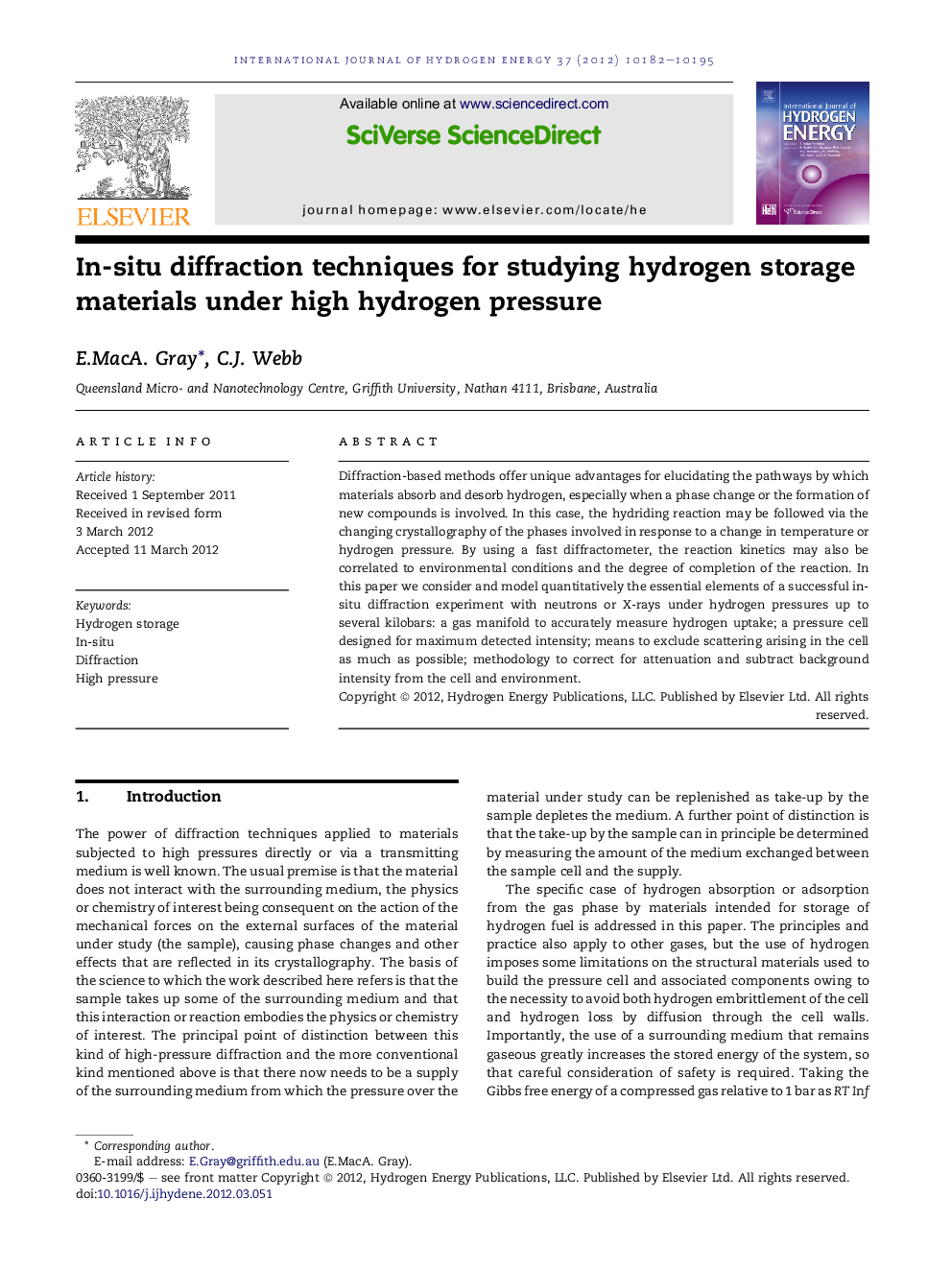| Article ID | Journal | Published Year | Pages | File Type |
|---|---|---|---|---|
| 1275205 | International Journal of Hydrogen Energy | 2012 | 14 Pages |
Diffraction-based methods offer unique advantages for elucidating the pathways by which materials absorb and desorb hydrogen, especially when a phase change or the formation of new compounds is involved. In this case, the hydriding reaction may be followed via the changing crystallography of the phases involved in response to a change in temperature or hydrogen pressure. By using a fast diffractometer, the reaction kinetics may also be correlated to environmental conditions and the degree of completion of the reaction. In this paper we consider and model quantitatively the essential elements of a successful in-situ diffraction experiment with neutrons or X-rays under hydrogen pressures up to several kilobars: a gas manifold to accurately measure hydrogen uptake; a pressure cell designed for maximum detected intensity; means to exclude scattering arising in the cell as much as possible; methodology to correct for attenuation and subtract background intensity from the cell and environment.
► Analysis of both neutron and X-ray in-situ diffraction cases. ► Quantitative analysis of uncertainties related to Sieverts manifold design. ► Analysis of pressure vessel design and diffraction collimators. ► Scattering model includes multiple scattering and attenuation correction. ► Discussion of cell materials compatible with hydrogen.
